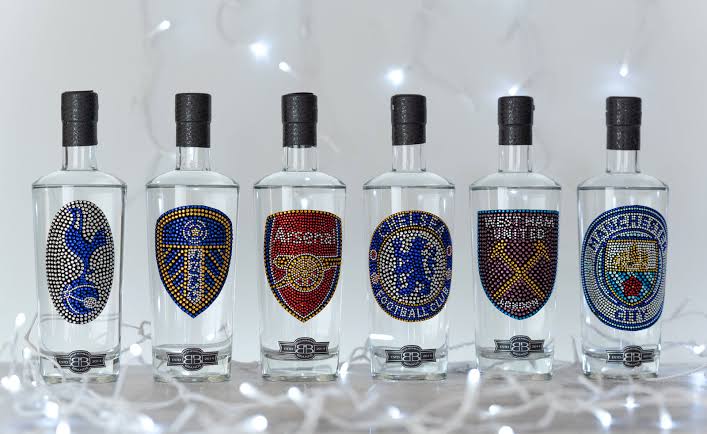Liquor store social media football strategy: Online presence is the bedrock of any business in the present world, and that applies to running a liquor store. Marketing your liquor store strategically is necessary for your business to stand out in a competitive industry.
To achieve a huge and active social media customer base for a liquor store, social media marketing strategies must be well implemented.
Here are five ways to strategically boost your liquor store’s social media presence this football season:
Liquor store social media football strategy
1: Know your target audience.
The first thing liquor store owners should take note of is the target audience, and it is when they identify the target audience for their campaign that they can narrow down the focus. A brand should first determine if their liquor store is to serve young professionals, if the store is for lovers of cocktails, or if it is open to wine connoisseurs. Liquor store social media ideas for football audience should be configured to match the target audience who are more of youths.
2: Create a content calendar using Liquor store social media football strategy
A well-crafted content calendar is necessary to help organize your keywords into trends and schedules. With a calendar to guide your content schedule, your business is able to maintain a consistent online presence while staying on track with its marketing goals. It will be nice to spice up the post with themes containing featured spirits, cocktail recipes, and wine pairings in a bid to ensure that your audience is engaged at all times.
3: Be consistent and keep your audience engaged.
Social media marketing prospers more with relationship building and audience engagement. The task might be daunting to create posts, make edits, format the tunes, and publish your campaign. You have to be up and doing; keep your followers engaged at all times.
You can achieve this by responding to comments promptly and in a professional manner, checking the inbox messages, and taking notes on reviews (both positive and negative ones). Admonish your followers to drop comments and recommendations; ask them about their favorite drinks. Organize competitions, host giveaways, and contests to boost your followers’s excitement and increase awareness of your liquor brand.
4: Keep track of your performance metrics.
The essence of performance metrics is to know the improvement level after implementing the liquor store’s social media marketing strategies. These metrics help businesses analyze their social media performance to make corrections and fill up any gaps created during the process. Weekly performance metrics are good for your liquor store, and they give you an idea of the number of potential customers that your post reached within the space of 7 days, the number of people who actually engaged with your post, and the estimated amount you can generate from such a reach.. Look out for the posts that performed well; you will find out that the posts with the highest engagements are those that resonate with your target audience. Follow the steps you implemented in such posts, make adjustments to the old ones, and watch the magic!
5: Take advantage of extra exposure gained by liquor store social media campaigns
As liquor stores start to carry out promotional sales, that is the best time to make the most profit. The essence is to have a huge ROI, so whether the promotion is through paid advertising or organic shares, what matters is that the brand is able to make the best profit as possible. Also inform consumers of discount sales and offers; they are perfect ways to keep the page engaged and active.
You may be interested in What is the difference between MLS next and MLS next pro?
Frequently Asked Questions on Liquor store social media football strategy
Who is the target market for alcohol?
Having an idea of the target audience for your alcohol or liquor brand will help you configure the tone of the social media content and increase the efficiency of the marketing strategies employed. The target audience for liquor stores is mostly men who are aged from 18 to 64 years old, with few women. All in all, it is better to have a huge target audience range so that everyone is covered.
What are the marketing channels for alcohol?
To market an alcoholic product or brand, there are different means to get it done. Among them are search engine optimization (SEO), pay-per-click (PPC) advertising, social media marketing, content marketing, and email marketing. It is not bad to apply all the strategies at once.
How do alcohol companies advertise their products?
Alcohol companies carry out social media marketing through these means:
What is a common marketing tactic among many liquor stores?
Due to the competition in the industry, it is common for liquor store owners to sneak into other business flows to know what the business is doing differently. The most common marketing tactic that is in practice by the majority of liquor stores is volume discounting. An example is that if a second-leading brand of wine sets the selling price per bottle at $15 in the US and a consumer happens to buy up to eight (8) bottles, then the price of all the additional bottles purchased will be $8.
Making the best out of your liquor store during football seasons
With this guide, liquor store owners can strategically apply social media marketing for better sales and brand awareness.
After implementing the steps highlighted in this guide and your liquor store is yet to pick up, it might be the right idea to take a closer look at your brand’s history, check if there was a bad review in the past, and make amends where necessary. Feel free to sneak and check on your competitors to see what they are doing differently. Monitor the progress and take tactical risks to improve your online presence.
